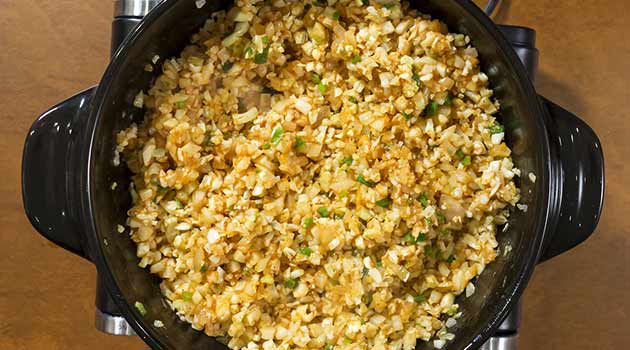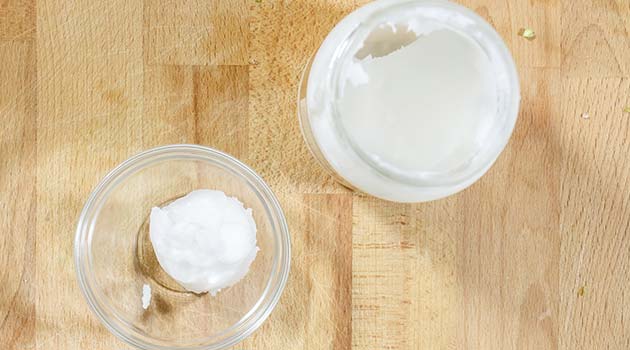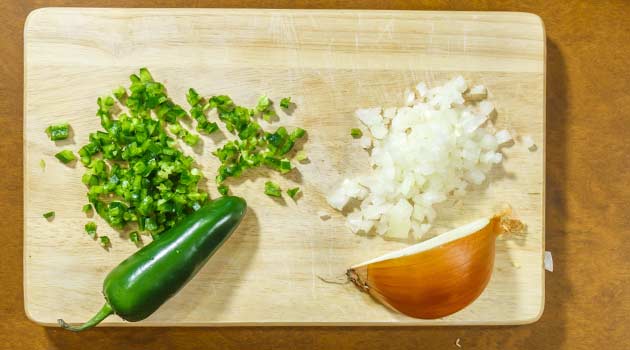Whether you’re looking for a healthier alternative to rice or you simply want to integrate more veggies into your diet, this Spicy Cauliflower Rice, contributed by Mercola staff employee Rachel Saenz, is a dish that you’ll surely enjoy. It’s low-carb, gluten-free and loaded with a wide array of nutrients. What’s more, it’s flavored with various health-boosting spices and seasonings for an added zing. There’s no reason for you to pass up this invigorating dish, so try making it today and surprise your family with a flavorful recipe that has a healthy twist.

Spicy Cauliflower Rice Recipe
Prep time: 10 minutes Cook time: 10 minutes Serving Size: 6 servings
Procedure
 |
1Heat oil in a large skillet over medium-high heat.
|
 |
2Add onions and jalapenos, and then sauté until tender, about two to three minutes.
|
 |
3Add the garlic and cauliflower, sauté until the cauliflower is tender, approximately two minutes.
|
 |
4Add tomato sauce, cumin, paprika, cayenne, salt and pepper. Stir to evenly coat the vegetables. Cook for three to four minutes, or until tender and heated through.
|
Tip
Don’t forget that you are in charge of the spiciness level. If you’d like it a little spicier, add more ground cayenne and jalapeno. If you’d like it less spicy, omit the jalapeno and reduce the amount of cayenne you’re adding to the dish.
Here’s How Cauliflower May Help Enrich Your Well-Being
Cauliflower is a cruciferous vegetable that’s been getting a lot of press lately due to its remarkable versatility. You can eat it raw and crunchy by adding it in a salad, roast it until it’s caramelized or process it to resemble carb-rich foods like rice and potatoes (as with the recipe above).1 While it’s often overshadowed by its greener cousins broccoli, lettuce and kale, cauliflower also deserves a spot in your healthy diet, as it contains a wide variety of vitamins, minerals and other nutrients, some of which include:2
Cauliflower is also an excellent source of antioxidants and phytonutrients, including beta-carotene, kaempferol and quercetin, to name a few. With the rich nutritional content of cauliflower, it’s not surprising that it provides a lot of health benefits too, such as:
|
Helps reduce the risk of cancer
|
Helps improve heart health
|
|
Helps keep inflammation in check
|
Helps maintain proper digestive function
|
|
Helps detoxify the body
|
Helps boost brain health
|
Don’t Underestimate the Merits of Spices and Seasonings
Spices and seasonings not only turn an otherwise boring dish into a mouthwatering meal, but they also boost its nutritional value without drastically increasing the calorie content. Some of the nourishing spices and seasonings used in this recipe include:
- Cumin: Known as the second most popular spice in the world, cumin is rich in phytochemicals, which account for its carminative, antiflatulent and antioxidant properties. It’s also an excellent source of dietary fiber, iron, copper, zinc, potassium, manganese and vitamins A, E, K and C.3
- Paprika: A dash of paprika may help improve your eye health, since it’s rich in lutein, zeaxanthin and beta-carotene. It also contains copper and iron, which may help improve blood circulation and formation, which in turn reduces your risk of heart disease.4
- Cayenne pepper: Cayenne pepper is an excellent source of vitamins A, C, K and B6. It’s also rich in manganese, niacin, riboflavin, magnesium, iron and potassium.5
- Himalayan salt: Unlike regular table salt, Himalayan salt is less processed and has no additives. It contains 84 trace minerals, some of which include magnesium, iron, calcium, sodium and potassium.
Other ingredients that make this dish tastier and healthier include garlic, which is known for its antibacterial and antiviral effects, and onion, which is an excellent source of valuable polyphenols that may help reduce your risk for cancer, maintain good heart health and enhance gut flora, among others.
This recipe also makes use of coconut oil, a superfood that’s rich in fatty acids and known for its many health benefits, such as improved brain function, better heart health, healthier immune system and higher energy, to name a few.
A Few Tips to Keep in Mind When Cooking Cauliflower Rice
Cauliflower rice is quick and simple to make, but that doesn’t mean that you can just toss those “grains” into the skillet, leave them to cook and wish for the best. Here are a few tips to keep in mind to make sure that your cauliflower rice tastes light, fresh and appetizing:6
- Don’t sauté for too long: While a quick sauté may enhance the flavor of cauliflower rice, heating for too long may cause it to lose its light and fluffy texture. If you don’t want to end up with a soft and soggy dish, be mindful of the cooking times mentioned above.
- Avoid using too much sauce: Cauliflower rice doesn’t absorb sauces or liquids the same way rice does, so be sure to put just enough sauce to coat the “grains” instead of pouring too much liquid into your dish.
- Don’t cook too much cauliflower rice all at once: Cauliflower rice tastes best when it’s freshly made, so as much as possible, cook only the amount that you can eat. If you’re planning to store it for later meals, don’t store it for more than two days, since it may soften and give off a strong smell.
Sources and References